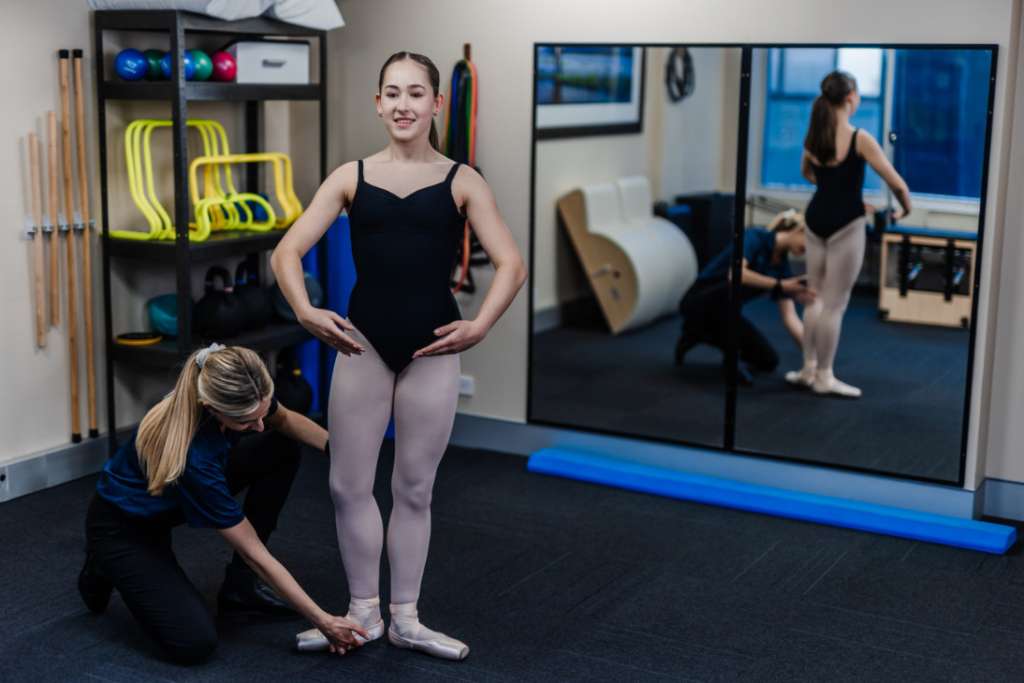Dancers effortlessly combine strength, mobility and control within extreme ranges of motion. This high physical demand on the body however can result in up to 70% of the population experiencing injury within a given year. With most dancers transitioning en-pointe between age 9-12, a pre-pointe assessment is often recommended for clearance and early detection or predisposition to injury.
En-pointe translates to ‘on the tip of the toes’. This position involves complete weight bearing through the big toe in alignment with the ankle lower leg and thigh. The stiffness, width and length of the shoe varies and should be correctly fitted within the dance school or through a specific retail outlet.
It is at the discretion of the dance school to determine when the dancer should commence pointe work. This may be based on years of training, training volume and injury history.
What is a pre-pointe assessment?
A pre-pointe assessment is conducted by a qualified Physiotherapist. The examination aims to review posture, strength and most importantly the control and strength of the foot and lower limb. The testing protocol reviews control in neutral and in first position whilst moving through the repertoire. Joint range of motion of the spine and lower limb are also completed as part of the assessment.
The aim of the test is to identify any strength imbalances, technical errors or flag any concerns that may be exacerbated by commencement of pointe training. At the cessation of the test your Physiotherapist may provide some recommendations for specific training and which may warrant a follow up session alongside liaising closely with your dance school.

How to prepare for the pre-pointe assessment
The dancer will be required to wear a leotard, stockings with hair neatly tied off the neck. The assessment will predominately be completed bare-foot however the slippers may be worn. It is encouraged that minors are joined by a parent or caregiver during the assessment.
What happens next
Once the assessment is completed, the documentation will be forwarded through to the client/caregiver and the dance school. If there are any concerns with the recommendations following the assessment the dance school is encouraged to directly contact the treating Physiotherapist. It is important to remember that the outcomes and measurements taken are objective and do not reflect the dancers capacity for future opportunities. The testing may identify areas for improvement which ultimately aim to reduce injury.
It is encouraged to continue working with your Physiotherapist for the development of specific rehabilitation specific to the student’s needs. In our clinic we have access to reformer pilates equipment which are used frequently in this population.
